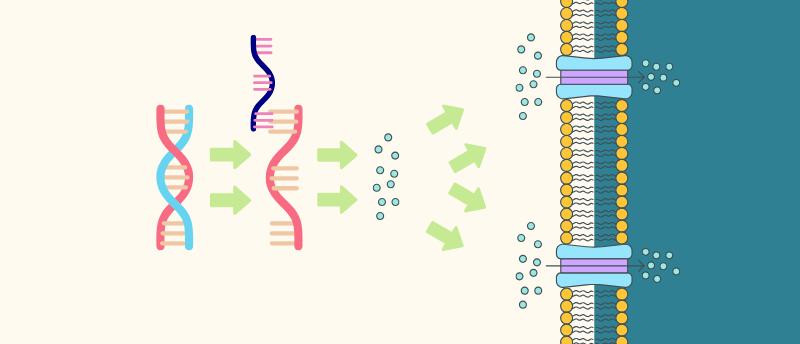It’s sno joke: new technique detects thousands of targets for snoRNAs

snoRNAs were thought simply to guide chemical modifications to rRNAs, but a new technique has revealed a suite of potential functions in protein secretion.
A recent research effort from the University of Chicago (IL, USA), led by senior authors Chuan He and Tao Pan, has produced a new technique with which to identify RNA targets of small nucleolar RNAs (snoRNAs). The technique, named snoKARR-seq, revealed the role of snoRNAs in the secretion of cellular proteins, suggesting that these molecules could be used as effective therapeutics for a range of conditions in the future.
The assumed primary function of snoRNAs, as established when they were first discovered and characterized, is to guide chemical modifications to their target locations on cellular ribosomal RNAs. However, when this assumption was made, targets had only been identified for 300 of the over 1000 known snoRNAs. Some researchers have been unsatisfied by this conclusion, particularly since snoRNAs vary wildly in size, from 50 to 250 residues, indicating that they could serve a variety of different functions.
To challenge this assumption and to explore the 700 snoRNAs that have yet to be functionally characterized, He developed the chemical crosslinking-based technique snoKARR-seq, which enables researchers to “…look at exactly what RNA each snoRNA is interacting with at the transcriptome level,” according to Pan. Working with Pan, He used this technique to screen for novel snoRNA–RNA binding interactions in a range of human cell lines and in mouse brain tissue.
Spatial maps of various tissues and organs in aging mice have revealed new insights into the aging process.
First, the team identified thousands of novel snoRNA targets, many of them outside of rRNA, serving functions other than the guidance of chemical modifications. mRNA targets were frequently uncovered, with one snoRNA in particular, SNORA73, targeting mRNAs that encode cell-surface or secreted proteins. SNORA73 was also found to target 7SL RNA, which constitutes part of the signal recognition particle required for protein secretion. From this, the team determined that SNORA73 forms a complex that links 7SL RNA to the target mRNA, bringing it into close association with the protein secretion signal recognition particle and facilitating secretion of the resulting protein.
Understanding the potential of this discovery for therapeutic applications, the team set out to explore whether synthetic snoRNAs could be developed to impact protein secretion. To do this, they edited the gene sequence of a green fluorescent protein reporter to contain the binding motif for SNORA73 at the 3’ end of the sequence and a signal peptide sequence to the 5′ end.
Once SNORA73 genes were expressed alongside the edited reporter, protein secretion was increased by 30–50% compared to a control vector or to a mutated version of SNORA73, demonstrating the potential of utilizing the SNORA73 pathway to manipulate the secretion of specific proteins. However, the presence of the 5′ signal peptide sequence was shown to contribute significantly to this increase, highlighting the importance of this sequence’s role in secretion, in addition to that of SNORA73.
Commenting on the significance of these findings, He stated, “Once you see so many targets for these snoRNAs, you realize there’s a lot more to be understood. We already see that they play a role in protein secretion, which has major implications for physiology, and it suggests a path forward to study hundreds of other snoRNAs.”
As snoRNAs are specific to different cell types, He and Pan believe they could be used in a diverse range of indications as therapeutic molecules or targets, something that they believe will be highly achievable. While specific technology for the synthesis and delivery of snoRNAs is currently unavailable, similar technologies exist for other RNA types that can be used as a starting block, swiftening the delivery of these molecules into the clinic.
